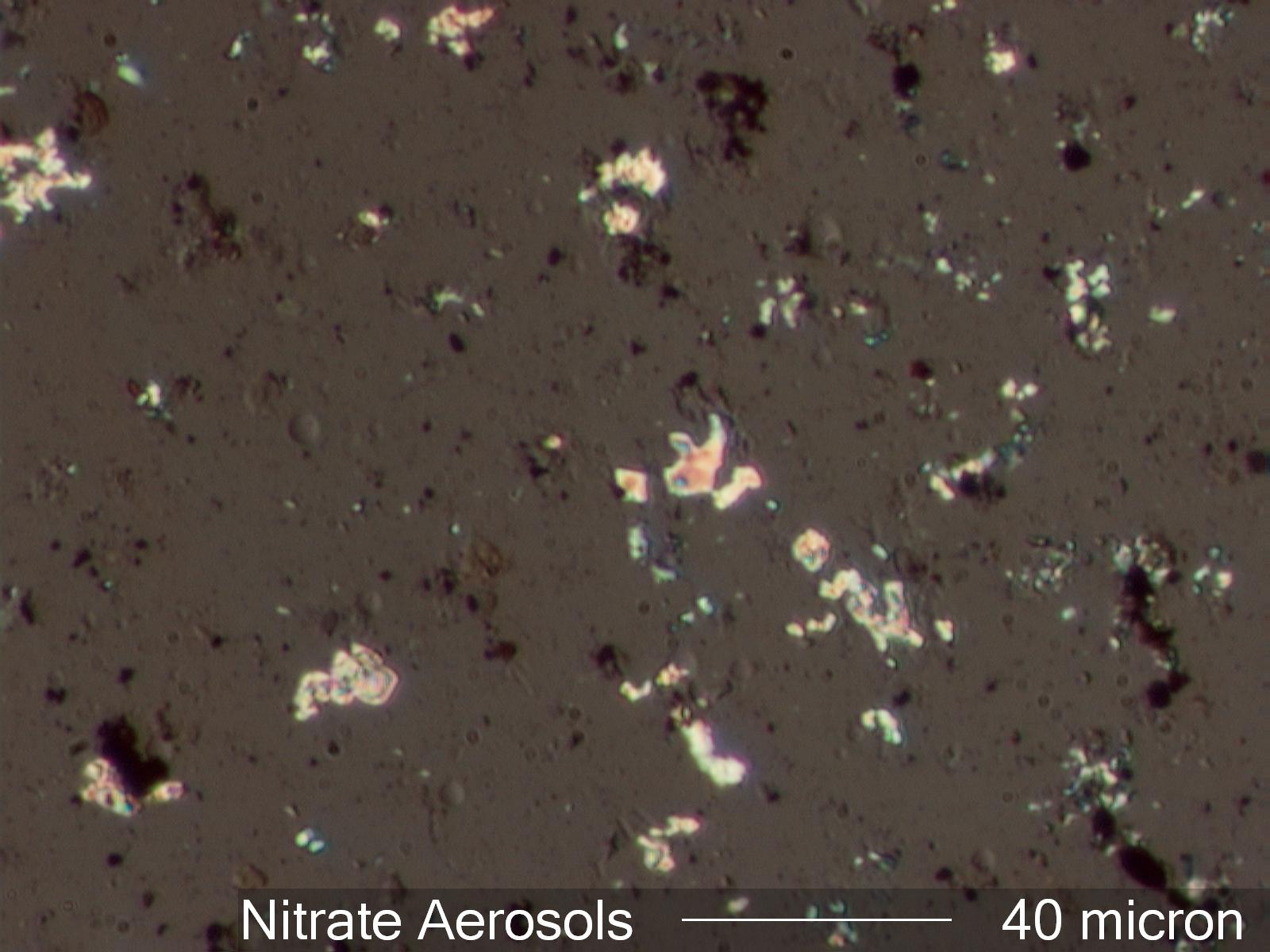Sodium Nitrate Aerosol
This sample is a tapelift from a building near Puget Sound
in Washington State.
The building was about 800 meters from Puget Sound and about the same distance from
Interstate Highway 5 (I-5). This show
how it tends to spread over surfaces during periods of high relative humidity and
then to recrystallize when the humidity
drops.
Transmitted Off Circular Polarized Light
Definition/Function:
Sodium nitrate is a strong oxidizing agent and is salty and slightly bitter to the
taste. It was used extensively in the
preservation of food but is now limited to no more than 500ppm. It is used in cigarettes
to modify the burning properties
of the tobacco and as a fertilizer. Its oxidizing properties are used in rocket fuel,
pyrotechnics, and black powder.
Significance in the Environment:
The nitrate aerosol in coastal urban areas is due to the formation of nitrogen oxides
(NOX or "NOX") by vehicle catalytic
converters. The NOX reacts with the salt spray aerosol near the ocean coasts, with
ammonia in inland areas,
and with carbonates in arid areas. This sample is from a building near Puget Sound in
Washington State.
The building was about 800 meters from the Sound and about the same distance from
Interstate Highway 5 (I-5).
Sodium nitrate is deliquescent and is generally present in this form are surfaces due to
frequent transitions
between the liquid and solid phase as the relative humidity changes in the building.
These deposits are not
uncommon along the pacific coast (including Puget Sound and San Francisco Bay) near
major freeways. Sodium nitrate is a
strong oxidizer and can irritate the skin if or where it is allowed to accumulate on
surfaces. It can accumulate in
ventilation ducts and increase the irritation caused by glass fiber from the HVAC system
and the black aggregate particles
from the ventilation system.
Characteristic Features:
Sodium nitrate is a deliquescent, highly birefringent salt that has the same crystal
habit as calcite. Its refractive indices
are 1.587 for omega and 1.337 for epsilon. The birefringence is very high, 0.25, so this
material is easily visible using
polarized light, even at low levels, on tapelifts from surfaces where it may accumulate.
Omega is parallel to the line that
bisects the acute angle of the rhombohedron. The crystals have symmetric extinction.
They are often seen as very irregular
birefringent films because they are so deliquescent. They tend to spread over surface
during intervals of higher relative
humidity.
Associated Particles:
References:


